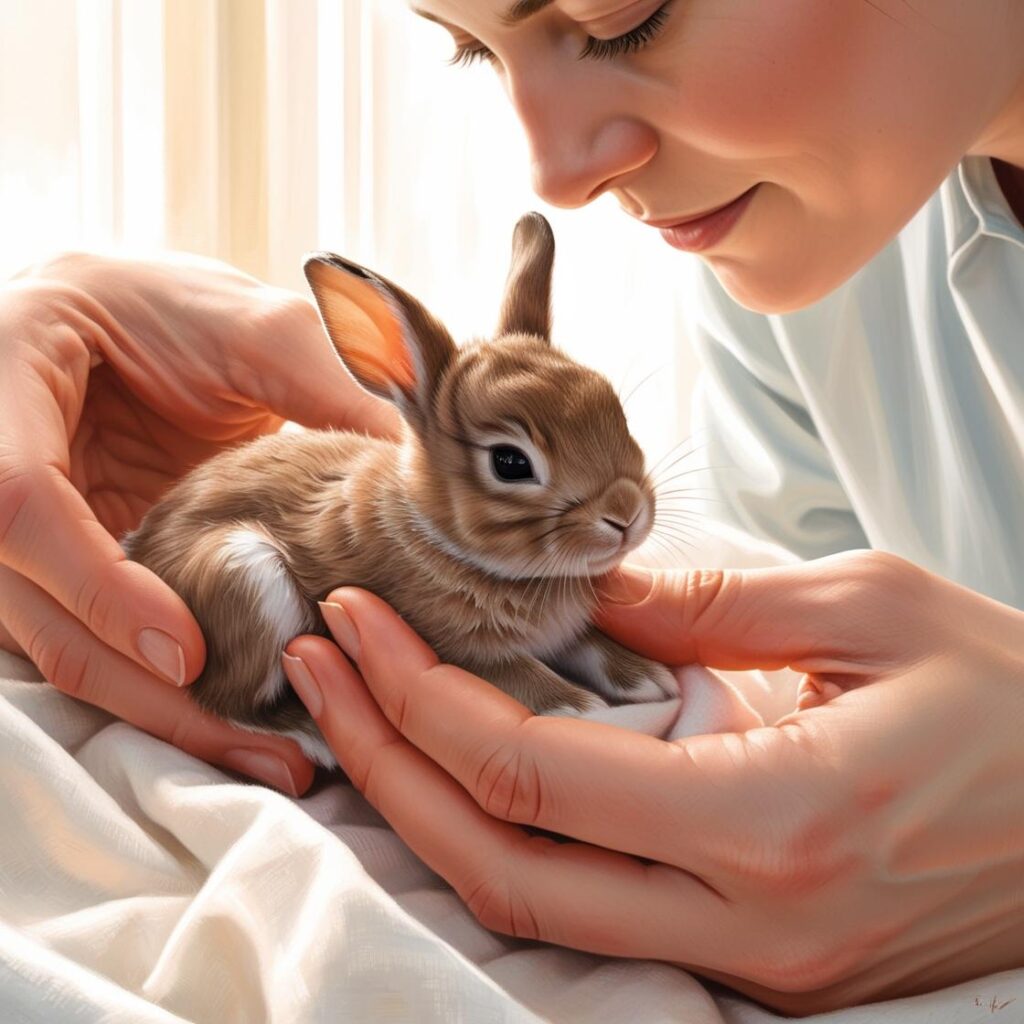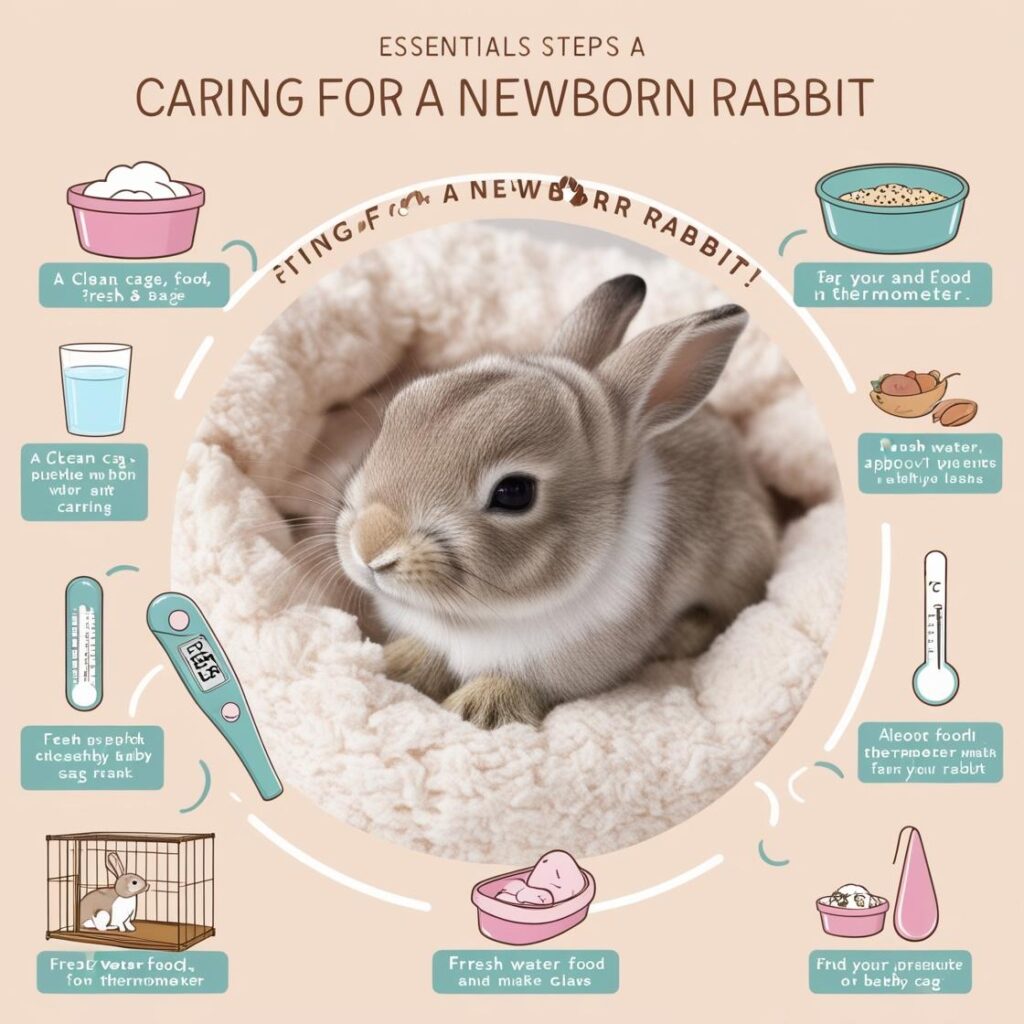Caring for a newborn rabbit, often called a kit, can be a rewarding experience, but it requires a significant commitment and understanding of their specific needs. Rabbits are social, intelligent animals that thrive with proper care and attention. This guide outlines the essential aspects of taking care of a newborn rabbit, covering everything from nutrition to habitat, and from health monitoring to socialization.

Understanding the Newborn Rabbit
Newborn rabbits are incredibly fragile and vulnerable in the first few weeks of life. At birth, they are typically born blind, hairless, and entirely dependent on their mother for warmth, nutrition, and care. A litter can range from one to twelve kits, depending on the breed and health of the mother rabbit.
The Role of the Mother Rabbit
In an ideal situation, the mother rabbit (doe) provides all necessary care for her kits, including warmth, feeding, grooming, and socialization. She will nurse them for about 4-5 weeks, and during this time, it is crucial to minimize human interaction to avoid stressing her and the kits. If the mother rabbit is healthy and attentive, she will manage the initial weeks very effectively.
However, situations can arise where a mother is unable or unwilling to care for her young. In such cases, human intervention becomes essential.
Signs of a Healthy Newborn Rabbit
When caring for newborn rabbits, it’s important to monitor their health closely. You should look for the following signs:
- Warmth: Kits should feel warm to the touch. If they feel cold, they may need to be warmed up gradually (never directly with heat sources).
- Weight Gain: Healthy kits will gain weight steadily. Weigh them daily to track their growth.
- Active Behavior: Kits should start to become more active and start moving around the nest after a few days.
- Good Milk Supply: If the doe is nursing effectively, the kits should have a full belly after feeding; you may observe them latching onto her.
The Importance of a Proper Environment
Nesting Area
If you need to care for orphaned kits or if the mother is not caring for them appropriately, creating a suitable environment is critical. You can use a small box with soft, clean hay or cloth as a nesting area. This space should be:
- Draft-free: Ensure that the area is away from windows, doors, and vents.
- Warm: Maintain a temperature of about 68°F to 72°F. Avoid exposing the kits to temperatures below 60°F.
- Quiet: Keep the environment low-stress and calm, away from loud noises and heavy foot traffic.
Bedding
Use clean, safe bedding for the nesting area. Avoid using cedar or pine shavings, which can be harmful to their respiratory health. Instead, opt for:
- Hay: Timothy hay is a fantastic option that also provides some nutrition.
- Paper-based bedding: Safe and absorbent, it can also keep the area clean.
Hygiene
Maintain cleanliness to prevent disease. Clean the nesting area daily, but do not disturb the kits or the mother rabbit unnecessarily. Keep food and water bowls clean to promote overall health.
Nutritional Needs
If the mother rabbit is unable to nurse her kits, you will need to take on the role of a caregiver, which includes feeding. Kits can only nurse for the first 4-5 weeks, and if you find yourself in a position where you need to feed them, use a special formula designed for rabbits:
Formula Replacement
- Commercial Kit Formula: Ideally, use a commercial rabbit milk replacer, such as Esbilac Puppy Milk Powder or KMR Kitten Milk Replacement, diluted according to instructions.
- Feeding Technique: Use a small syringe or bottle designed for small animals to feed the kits. Feed them very gently and slowly to prevent aspiration.
Feeding Schedule
- Frequency: Newborn kits may need to be fed every 3-4 hours initially, tapering down as they begin to eat solid food around four weeks.
- Portion Size: A general guideline is approximately 5% of their body weight in milk replacer, split into several feedings throughout the day.
Introduction to Solid Food
Around four weeks of age, you can begin introducing soft, high-quality hay and a small amount of pellets designed specifically for rabbits. Fresh greens can also be introduced gradually after eight weeks.
Health Monitoring
Keep a vigilant eye on the health and development of your kits. Here are some key health considerations:
- Weight Monitoring: Weigh your kits daily to ensure they are gaining weight.
- Eyes and Cleanliness: Check their eyes for any discharge and ensure they remain clean.
- Bowel Movements: Observe their stools. Healthy kits should produce small, firm droppings after they start eating solid food.
- Fleas and Parasites: Consult a veterinarian if you notice any signs of parasites or fleas.
Socialization and Handling
Once the kits are around four weeks old, you can start gently handling them to promote socialization. They are naturally curious and social animals, and early handling will help them bond with humans.
- Gentle Introduction: Start by allowing them to sniff your hand and gradually pick them up for short periods.
- Interaction with Other Rabbits: If possible, slowly introduce them to healthy adult rabbits, as this can help them learn natural behaviors.
When to Seek Veterinary Help
If you notice any unusual behavior in your kits, such as lethargy, refusal to eat, or any signs of illness, it’s critical to seek veterinary assistance promptly. Rabbits are prey animals and often do not show visible signs of illness until it’s quite serious, so proactive health monitoring is key.
Conclusion
Caring for a newborn rabbit is a significant responsibility that requires dedication and knowledge. By understanding their nutritional needs, maintaining a clean and safe environment, monitoring their health, and providing socialization, you can help set the foundation for a happy, healthy rabbit. If you have any doubts or questions, reaching out to a veterinarian who specializes in small animals can provide additional guidance and support. Your commitment can lead to a loving and fulfilling bond with your rabbit as it grows into a vibrant member of your family.
